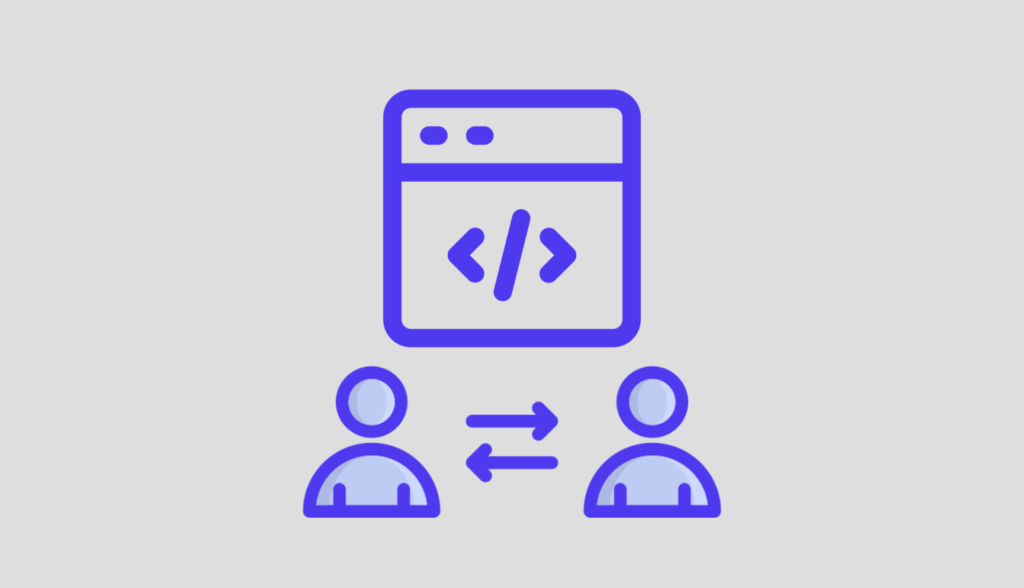For Independent Software Vendors (ISVs) offering solutions via perpetual licenses, term agreements, or Software as a Service (SaaS), one of the biggest hurdles to onboarding new customers is establishing trust. This is particularly crucial if your product is integral to the customer’s operational success. After all, if an organization is relying on your software to perform core functions, they need to be sure you’re reliable—both as a product and as a partner.
A customer’s worst fear is investing in a solution that goes “end of life,” or becoming stranded if the vendor is acquired, pivoted, or shuts down. This potential upheaval can lead to major disruptions. Consequently, potential clients need assurances and transparent reporting that demonstrate you’re in it for the long haul – and are prepared to protect them against “what if” scenarios. In this article, we’ll explore how ISVs can use The Code Registry to provide peace of mind through independent reporting, automated escrow capabilities, and AI-powered code insights.

1. The Importance of Transparency
Key Metrics That Matter
Modern software buyers are more technically savvy than ever, and they often demand detailed information before signing a contract. Transparency isn’t optional; it’s an essential trust-builder. When potential customers see you proactively sharing insights about your software’s security, architecture, and update cadence, they feel more confident about integrating your product into their own infrastructure.
Below are five key metrics you should consider reporting:
- Security
- Demonstrating proactive security measures and timely vulnerability patches reassures customers that their data and operations remain safe.
- Reference: OWASP (Open Web Application Security Project) offers widely recognized best practices for securing software.
- Third-Party Dependencies
- Modern software often relies on external libraries, frameworks, and APIs. Customers want to know if critical functionalities hinge on third parties.
- Reference: A Sonatype report found that 68% of software breaches originate from known vulnerabilities in third-party components.
- Open Source Component Reliance
- Many codebases use open source components for speed and efficiency, but these come with license obligations and security considerations.
- Reference: The Open Source Initiative highlights common licenses like MIT, Apache, and GPL.
- Regularity of Updates
- Frequent, incremental updates indicate an active development cycle and agile response to feature requests or security patches.
- Consistent release notes or a public roadmap can help your customers see your commitment to continuous improvement.
- Frameworks and Languages
- Showcasing which technologies your software is built on can give customers confidence in its stability and long-term viability.
- Outdated or end-of-life technologies raise red flags; clarifying your tech stack helps alleviate these concerns.
By offering clear, independently verified reports on these areas, you signal your willingness to be transparent and demonstrate robust internal controls.
2. Providing Peace of Mind for ‘What If’ Scenarios
Customers often wonder, “What happens if the vendor goes out of business?” or “What if they pivot and discontinue support for our product?” Addressing these worries upfront can turn a hesitant prospect into a loyal advocate.
Common ‘What If’ Questions
- What if you go out of business?
Customers want reassurance that their operations won’t collapse if you shut down. - What if you remove a feature or change direction?
Feature deprecation can disrupt workflows; clients may need fallback options. - What if you update the platform in ways that break integrations?
Stakeholders need to know how updates are managed and how backward compatibility is maintained. - What if you’re unavailable for support?
Service-level agreements (SLAs) and proactive customer support structures help alleviate these concerns.
By proactively addressing these questions, ISVs show confidence in their product and their ability to support clients long-term. This is especially critical for large enterprises and regulated industries, where any software disruption can have immediate financial or compliance ramifications.
3. Automated Software Escrow and Visibility Reporting
The Traditional Approach
Historically, software escrow was handled by third-party firms that stored code snapshots in secure vaults. In the event of vendor bankruptcy or dispute, the escrow company would release the code to the end user. While this method offered some peace of mind, it was often manual, costly, and lacking in real-time updates.
Modern Escrow Solutions
Automated escrow streamlines this process by regularly updating code backups and providing real-time visibility into the health and security posture of the software. This transparency is a game-changer for ISVs. Rather than negotiating lengthy legal contracts for every deal, a standardized, automated escrow offering can be bundled with your product to reassure every new client.
Key Benefits of Modern Escrow
- Ongoing Code Verification: Ensures the code placed in escrow is current and functional, reducing disputes if it ever needs to be released.
- AI-Driven Insights: Automated scans can detect vulnerabilities or licensing issues, helping vendors fix problems before customers discover them.
- Speed to Market: Offering escrow as part of a standard package can accelerate contract negotiations, cutting down on custom legal arrangements.
4. How The Code Registry Helps ISVs Build Trust
A Comprehensive AI-Powered Platform
The Code Registry provides a unified solution that integrates code security and optimization insights with automated software escrow. Here’s how:
- Ease of Setup
- Simply connect your repositories from GitHub, GitLab, Azure DevOps, Bitbucket, or other version-control systems. The Code Registry’s platform automatically synchronizes and secures your code in an independent vault.
- Real-Time Security & Compliance
- Benefit from AI-powered vulnerability assessments, Software Bill of Materials (SBOM) generation, and open source license tracking.
- Reference: A GitHub blog post highlights how automated scanning reduces the risk of security breaches stemming from overlooked vulnerabilities.
- Automated Reporting
- Provide your customers with regularly updated reports on key metrics: security vulnerabilities, dependency usage, code complexity, and more. This transparency can be shared via a public certificate or private dashboard.
- Automated Escrow Certification
- Every time your codebase is replicated, a new escrow certificate is generated and timestamped for your customers’ peace of mind.
- Store additional documentation—such as legal agreements or deployment instructions—to simplify potential code handovers if the escrow is ever triggered.
- Scalable Subscription Model
- No limits on the number of customer certificates or code volume. You pay a monthly subscription, which scales based on your repository count and overall code size.
Beyond Escrow: Additional Value Propositions
- Developer Productivity Metrics: Keep an eye on how efficiently your team is coding, and share improvement metrics with stakeholders.
- Cost-to-Replicate Valuation: Estimate the time and expense required to rebuild your software from scratch, highlighting the depth of your IP.
- Executive-Ready Summaries: Generate easy-to-understand dashboards and reports for both technical and non-technical audiences, streamlining discussions in boardrooms or stakeholder meetings.
Transforming Trust into a Competitive Advantage
In a competitive software market, trust is often the differentiating factor that wins deals. By offering transparency in security, code quality, and development practices—along with the reassurance of automated escrow services—you demonstrate that you stand behind your software and value your customers’ success.
The Code Registry combines AI-driven insights and automated software escrow into a single, easy-to-manage subscription. This seamless integration allows you to focus on innovating your product rather than fielding constant questions about reliability and compliance. For your customers, it provides tangible guarantees and ongoing visibility, turning potential skeptics into long-term partners.
Ready to Elevate Your ISV Offering?
Discover how The Code Registry’s all-in-one platform can simplify your code security, compliance, and escrow solutions—instilling confidence in every new customer relationship – Book a Demo Today >>
Want to Learn More?




